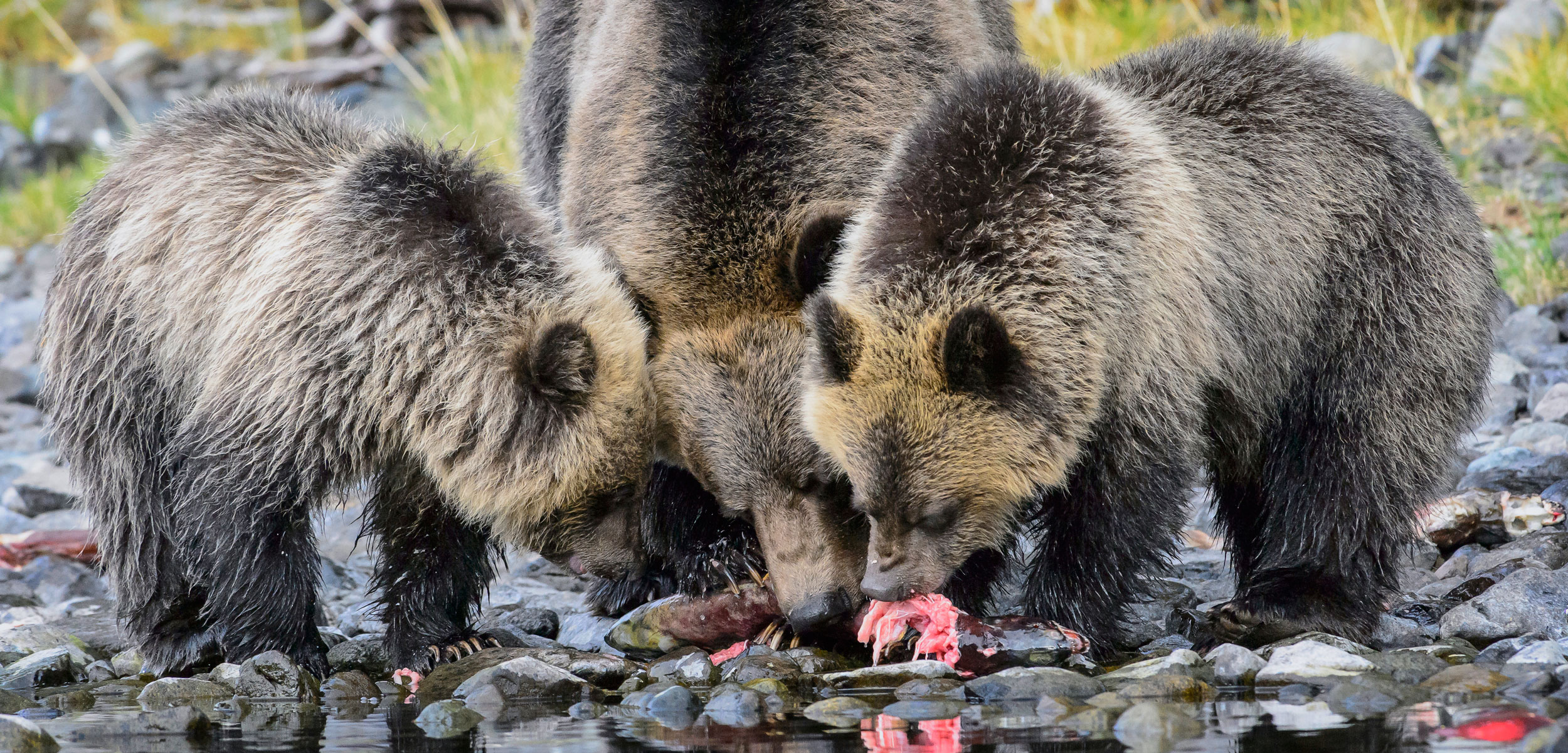Bad News Bacteria for Bears
A plan to relocate bears to Washington’s North Cascade region could face a formidable obstacle from salmon poisoning disease.
Article body copy
Infected salmon might be an obstacle to a planned grizzly bear recovery in the US northwest.
Salmon poisoning disease (SPD), caused by a bacterium, is most commonly associated with dogs that have eaten raw salmon. Now, a newly arrived species of bacterium could have the same effect on grizzly bears once they’re moved to the North Cascades region in Washington. The threat was identified by Charles Robbins, a wildlife ecologist at Washington State University, and his colleagues who in recent experiments showed that any bears brought west to start a new population will be susceptible to a new form of SPD that’s taken hold in the region.
Though the effort has been start and stop, the US National Park Service (NPS) and the US Fish and Wildlife Service (USFWS) have been developing their plan to bring bears to the eastern region of the North Cascades since at least 2015. The area has had only a few grizzly sightings since 1964 when the last confirmed individual south of the Canadian border died. Fur trapping and bounty hunting in the 19th century were the major culprits behind the population’s decline, combined with other sporadic kills by humans. Wayne Kasworm, a wildlife biologist with the USFWS involved with the recovery effort, says the earliest the bears are likely to be introduced is the summer of 2019, but he can’t say whether that plan will be affected by the new finding.
The bacterium that causes SPD infects grizzly bears in a devious way—by hitching a ride in a parasitic worm. The worm infests and destroys the gonads of stream snails. Unsatisfied with simply destroying the family-making dreams of the snails, the worm leaves this host and enters salmon or other fish. It finishes its life cycle in the guts of wolves, dogs, skunks, raccoons, or bears that have fed on the infected fish. When these predators defecate, they spread worm eggs to nearby streams, giving rise to a new generation of parasites to infest other snails.
While the worms themselves do not cause undue problems for the bears, the bacteria certainly do. Most grizzlies seem to have developed a resistance to the typical cause of SPD, the bacterium Neorickettsia helminthoeca, but a different species that causes the same disease appeared in salmon in the US northwest in recent decades.
Researchers think this new bacterium, Stellantchasmus falcatus, likely first arrived in the United States from Japan or Vietnam in the 1970s, though reports were few. Now, it can be found in salmon from California to near the Canada-US border.
Knowing this new bacterium was lurking in the environment, the researches wanted to see what effect it might have on planned grizzly recovery efforts. To do so, Robbins and his colleagues conducted an experiment over two consecutive years in which they fed salmon to captive bears and monitored them for signs of SPD, such as diarrhea, lethargy, or anorexia.
While about half of the bears got sick throughout the study, the scientists found that bears that became ill the first year seemed to have developed a resistance to the disease by the second. The experiments suggest the disease would likely be a threat to any bears brought to the region—at least at first.
“The study provides a note of caution that the salmon contain a bacterium that no grizzly bear has ever experienced,” Robbins says. “So, any Cascade bear that finds and consumes a significant amount of salmon has a probability of getting sick.”
Heather Bryan, a biologist at the University of Victoria who studies grizzlies and was not involved in the research, says that it would have been better if the researchers had developed a genetic model of SPD to test rather than infecting live grizzly bears with this “awful disease.” But she notes that the work is important. Climate warming could cause the parasite that carries the SPD-causing bacteria to expand northward to areas where it was previously not found, Bryan says. The re-establishment of salmon runs could also expose bears and other susceptible animals to the disease, she adds.
Kasworm says that while planning for the relocation isn’t finished, the USFWS is considering moving bears from populations that don’t tend to eat salmon. He says the bears might also be brought to the eastern end of the North Cascades, where there are few salmon streams.
If that’s the case, Robbins says, the bears may be able to avoid the worst of the disease. If the bears are more accustomed to eating berries, roots, and land animals, it might keep them safe from infected salmon.
In the meantime, Bryan says more research is needed to understand whether grizzly bears are able to develop a resistance to the new strain of salmon poisoning disease.

